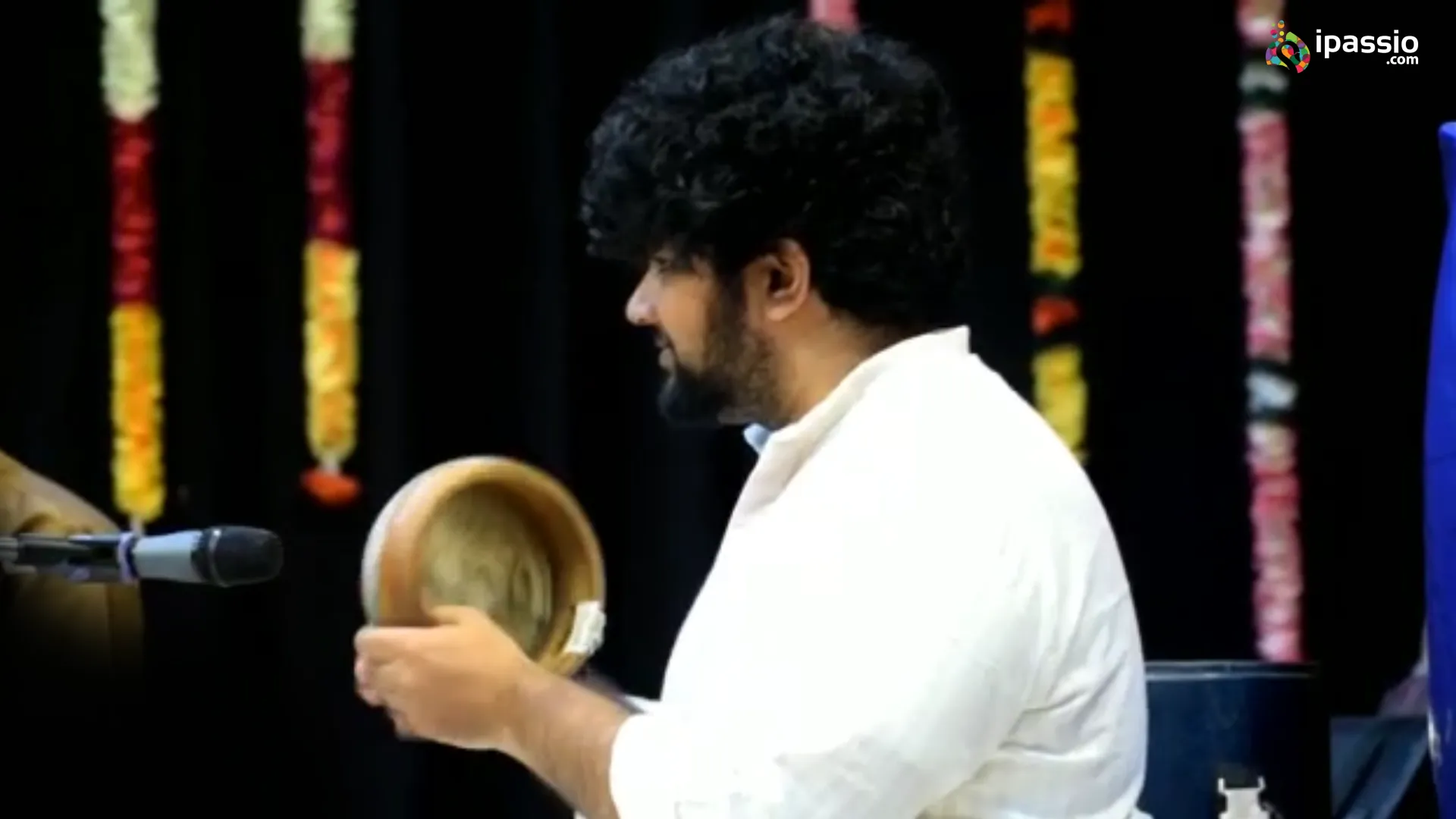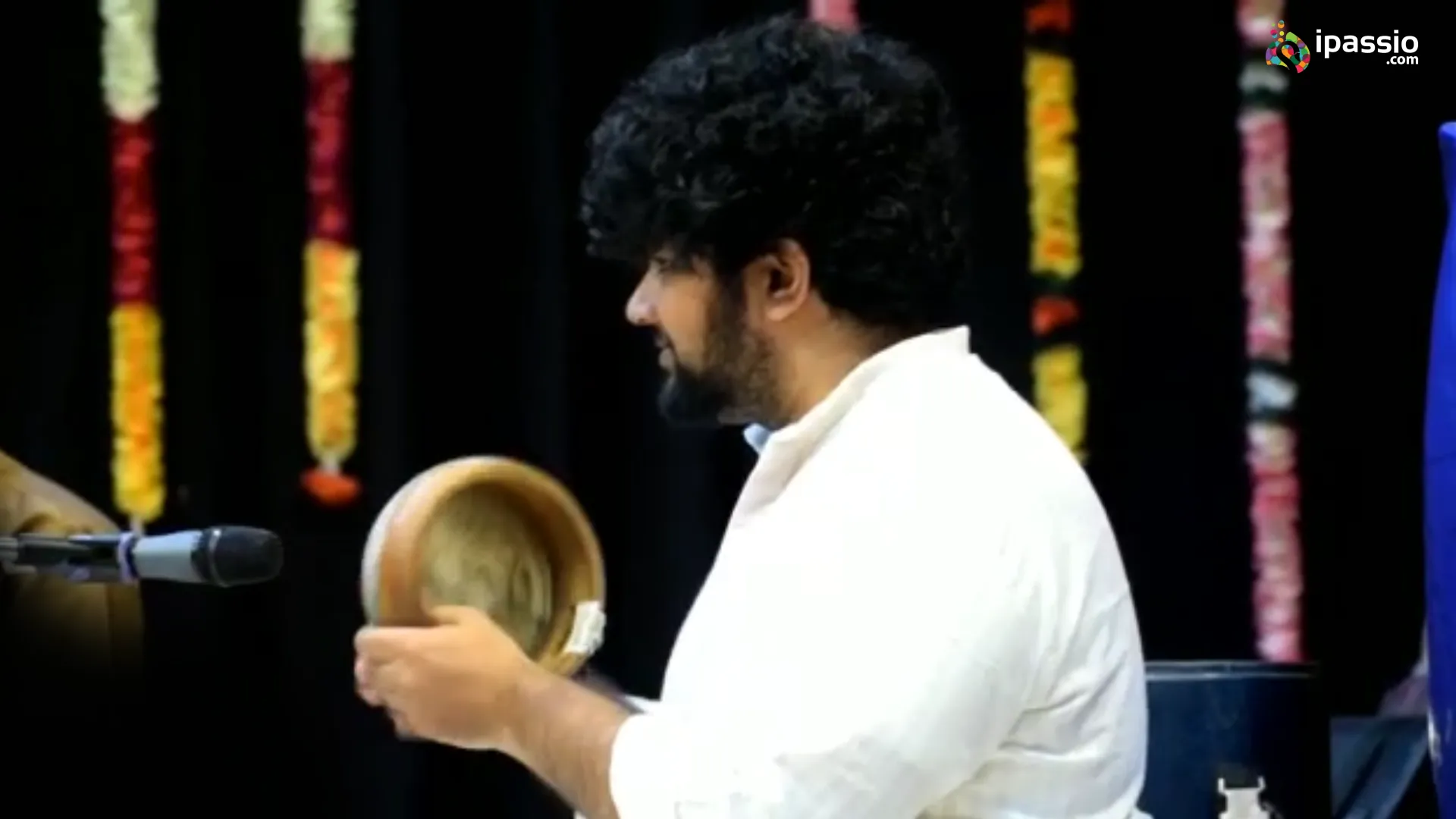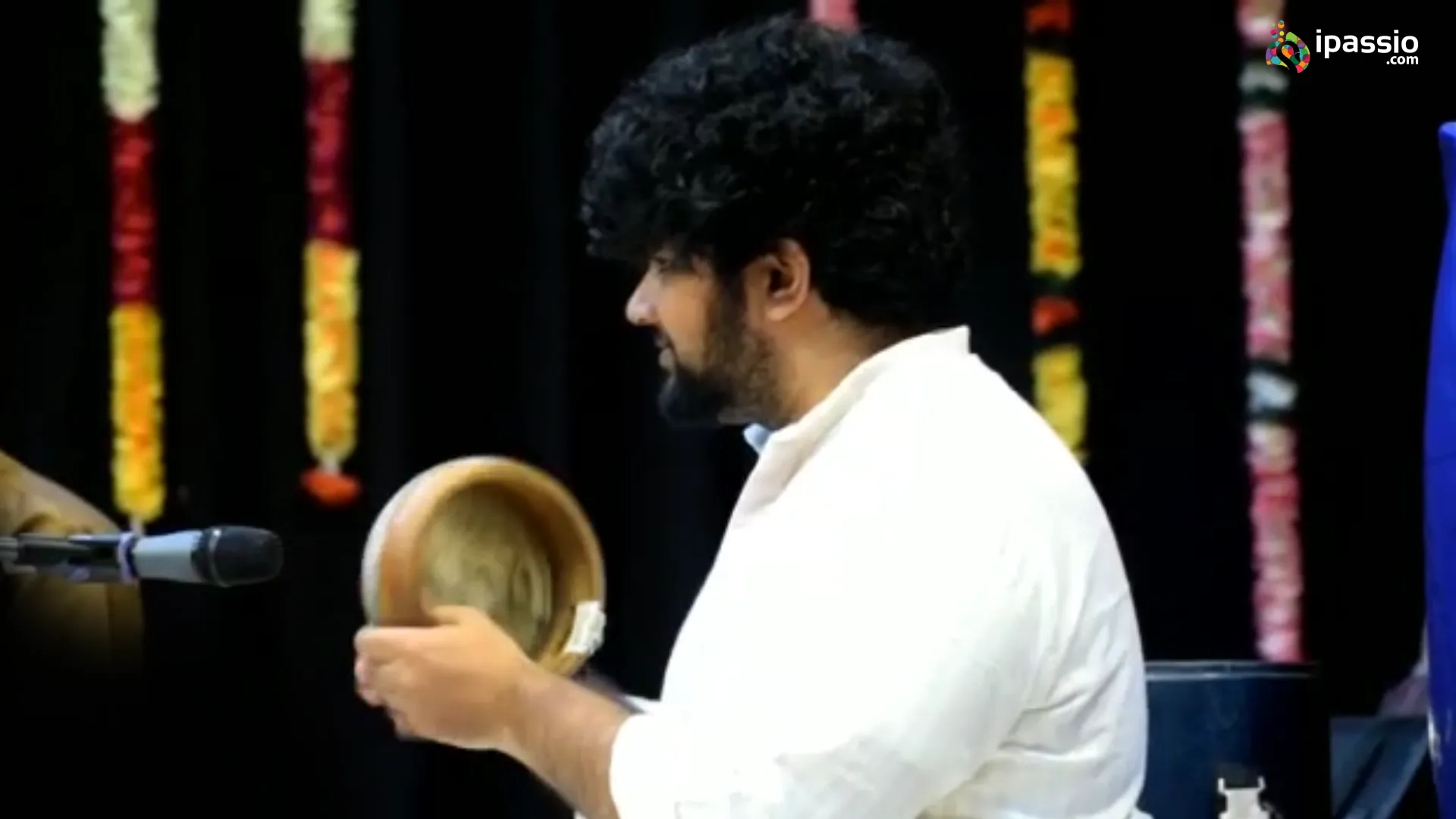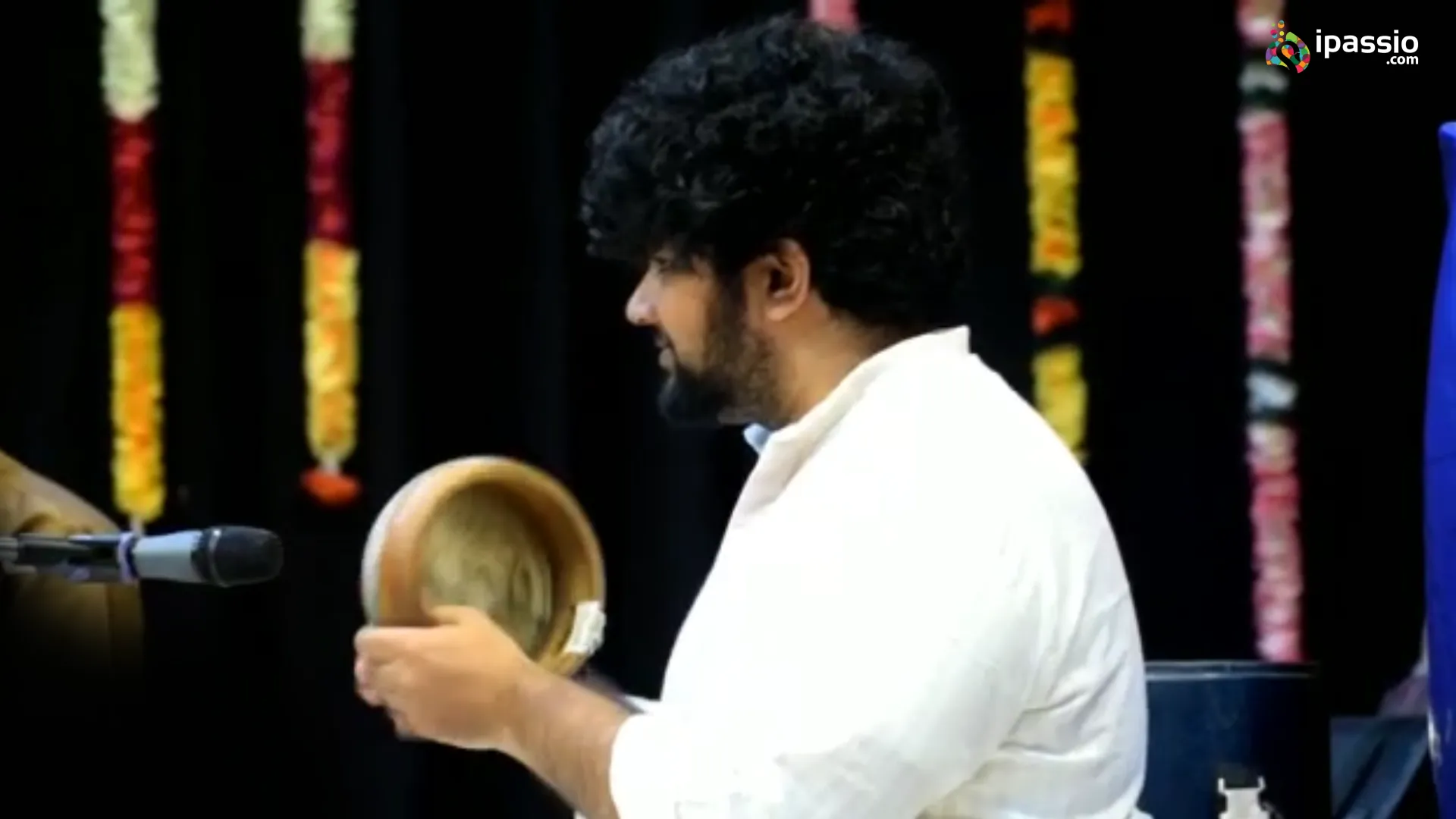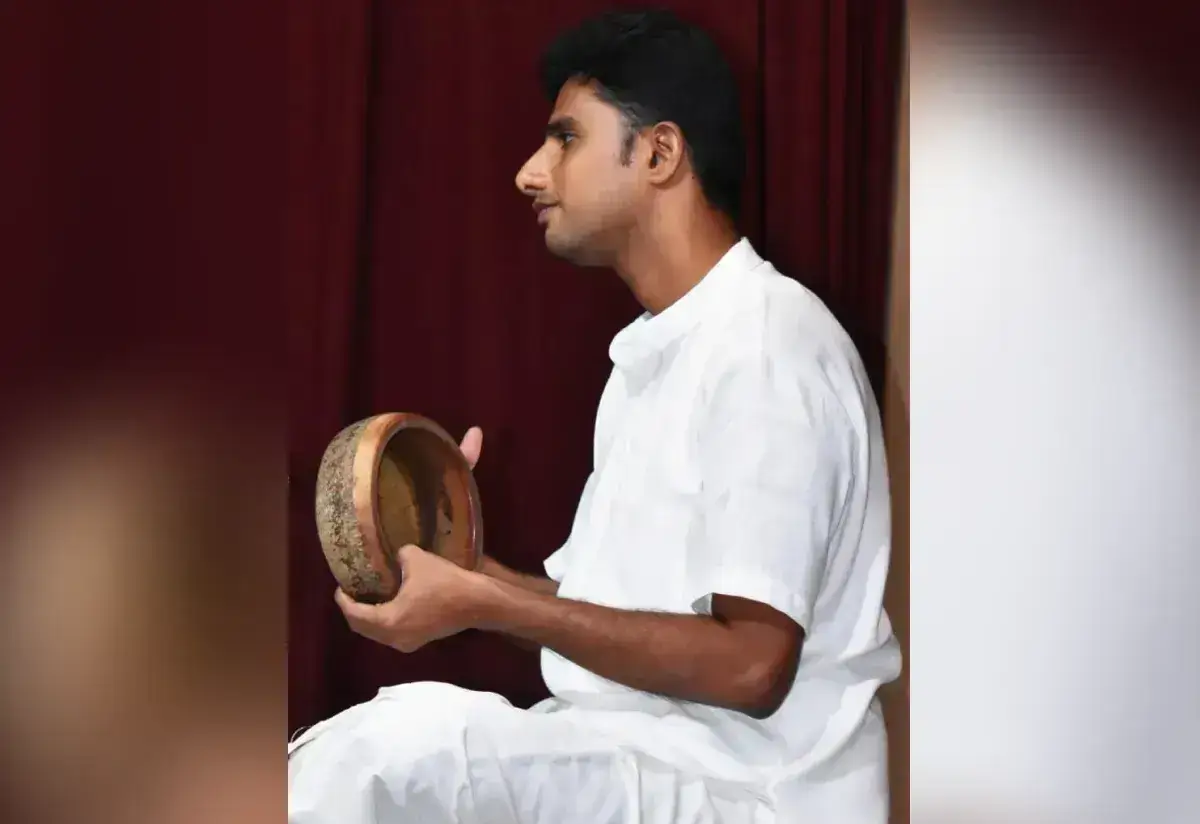Kanjira Overview
Kanjira is a frame drum originating in South India and is considered a member of the tambourine family. It has also been called ganjira, khanjiri, and khanjari—but these names all refer the same instrument. It is a single frame drum with a pair of jingles, also called bells or zils, set into the frame on one side. These two features give the kanjira a unique sound that is simultaneously bright and resonant.
The kanjira is made of a circular wooden frame, traditionally from the jackfruit tree. Frame sizes vary but they are made to fit comfortably in the hand, usually 17 to 19 cm in diameter and 6 to 10 cm in depth. The frame is covered by a stretched drum head secured with glue on one side and left open on the other. Traditionally, the drum head was made from monitor lizard skin but goat skin or a synthetic material are more popular today.
The jingles set into the frame of the drum are small metal discs that ring against one another when the instrument is played. Many traditional kanjiras had jingles made from old coins but are now made from any number of metals. The drum is played with the palm and fingers of the dominant hand while held in the other hand. The instrument is typically held vertically in front of the player, allowing the musician to strike the drum quickly and efficiently with one hand.
The kanjira is traditionally a folk instrument and was used in bhajan for centuries. Now the instrument is primarily used in Carnatic tradition and is often the supporting instrument for South Indian percussion instruments like the mridangam. It’s possible to alter the pitch of the kanjira drum, making it a versatile and popular accompaniment.
History of Kanjira Instrument
Although hand drums originated at least 6,000 years ago, it’s more difficult to pinpoint the evolution of each distinct drum. Around 200 to 400 BCE, an advanced and sophisticated culture of drumming emerged in India. This is evidenced by the Sanskrit texts Panchatantra and Natyashastra, which defined the different types of rhythm, as well as the different types of ancient drums that are the predecessors of many modern Indian drums.
The word kanjira likely derived from the Tamil words ‘kanja’ for skin and ‘jari’ for a small jingling anklet—the word kanjira literally meaning ‘skin with bells.’ This term and iconography depicting a hand drum with jingles were present throughout India beginning in the 16th century, when it is likely that the kanjira developed. Many of the early paintings depict frame drums with jingles being played at a wedding or celebration along with other Indian folk instruments.
The kanjira’s emergence in South Indian Carnatic music, as well as the development of the modern form of the instrument, is credited to Manpoondia Pillai. In the 1880s, Manpoondia Pillai was a temple lantern-bearer who sought to study drumming. He eventually modified the kanjira instrument to have just one set of jingles and he introduced the tradition of using lizard skin. It is said that Pillai’s sophisticated playing technique elevated the kanjira to be included in South Indian classical performances—where it has remained as an essential part of Carnatic tradition.
Types of Kanjira Musical Instrument
The kanjira musical instrument is relatively simple in construction and, other than a slight variance in size and materials, is very standardized in design. Although there are other types of frame drums with jingles—particularly throughout other cultures, the kanjira remains singular and largely unchanged since the 19th century.
In order to be played effectively, the kanjira must fit comfortably in one hand—this accounts for the differences in size. While the skin used for the closed side of the frame can change the sound of the drum, there are typically not a wide variety of choices. Since monitor lizards that were traditionally used for the skin have become endangered, goat skin is used most predominately. Many players express a preference for goat skin over the traditional lizard skin.
The kanjira is capable of a surprisingly wide range of sounds and pitches. The different sounds produced by the drum depends more on playing and tuning technique than a change in design or materials. When learning how to play the kanjira instrument, it’s best to learn technique before deciding on the best type of drum for the player.
Kanjira Playing Techniques
The kanjira has a very specific and standardized playing technique in South Indian Carnatic style. Percussion patterns in Indian music, both Hindustani and Carnatic tradition, are highly complex and were established hundreds of years ago. These patterns are utilized by all percussion instruments in classical music and are usually achieved with both hands—like with the tabla or mridangam.
Achieving the rhythm patterns of Carnatic music with one hand makes playing this instrument challenging and, according to kanjira exponents, very enjoyable and satisfying to learn. Even learning the basics of kanjira can be easy and fun to do. The drum is played with the palm and fingers of the dominant hand while the drum is held angled slightly on its side by the other hand.
In Carnatic music, rhythms are composed of several individual sounds, or notes, and each sound is achieved by striking the drum in a specific way. Additionally, the way the left hand grips the frame will alter the pitch, therefore altering the sound as well. For example, the sound ‘TA’ is played by striking the drum with the last three fingers of the dominant hand. The fingers are held together and strike the middle of the drum while flat, creating a sharp slapping sound. For this sound, the hand holding the drum doesn’t apply pressure to the frame. There are dozens of different sounds produced in Carnatic music and most of them are played on, or slightly altered for, the kanjira.
Kanjira Mechanics
Due to the small size of the kanjira, the sound the drum produces is naturally high-pitched. To achieve the bass sound that is favored, the tension of the drum head must be reduced. Traditional kanjira players change the pitch of their drum by two methods. The first is by applying pressure to the outer rim with the hand holding the instrument, this movement reduces the tension of the skin slightly.
The second traditional method of changing the pitch is by sprinkling water on the inside of the drum. This is not an exact practice and it depends on the player’s experience and style to achieve the sound they’re looking for. This process may have to be repeated several times during a performance as the drumhead dries out. Also, if the drum head becomes too moist, the instrument will lose its tone and the player will have to wait until it dries. For this reason, many professional performers will use several kanjiras during a performance.
Recently, kanjiras have been made to include a tuning peg that can reduce or increase the tension of the drum head—making tuning the instrument much more precise. These instruments are also typically made from synthetic materials. While the quality of sound is different, it depends on the preference of the player as to which is better.
When looking for kanjira lessons online or in person, it is best to make sure the teacher is adept at tuning the type of instrument you already have or plan to purchase. It is likely that most kanjira lessons are centered around the traditional methods of changing pitch with water and pressure.
Notable Kanjira Players
There are many exceptional kanjira players in history and modern day. Below are some of the most talented and well-known kanjira players from around the world today.
- Anandan Sivamani
- B. Shree Sundarkumar
- B.S. Purushottam
- Amrit N. (also known as Bangalore Amrit)
- C.P. Vyasa Vittala
- H. Ramakrishnan
- Jamey Haddad
- Natarajan Ganesh Kumar
- Nerkunam Dr S Sankar (View his course)
- Packiri Shunmugam Pillai
- Pete Lockett
- T.S. Nandakumar
- Thetakudi Harihara Subash Chandran
- Trichy Sankaran
- V. Selvaganesh


